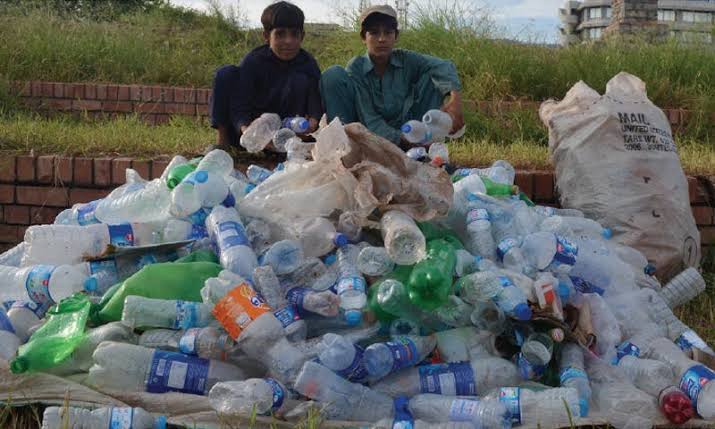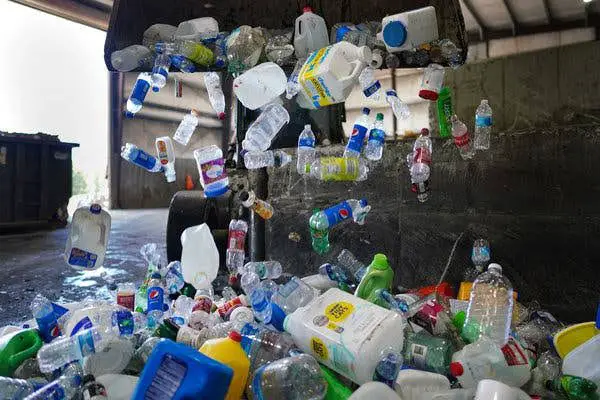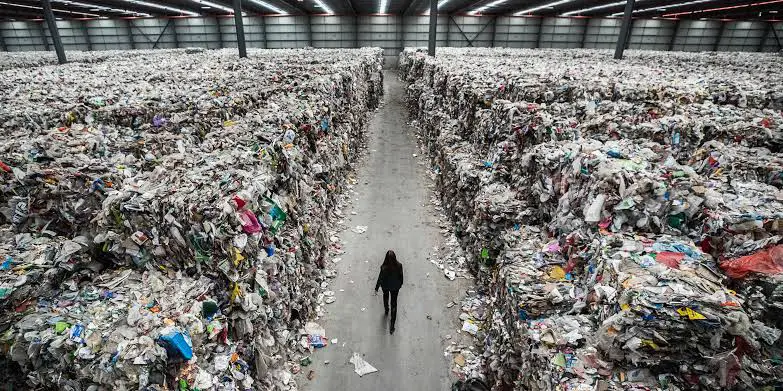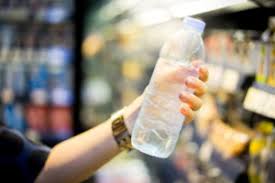Turning plastic bottles wastes into carpet is a smart idea, instead of throwing away plastic bottles, they can be recycled into something useful, like carpets. This helps the environment because it reduces the amount of plastic waste that ends up in landfills or oceans.
Plastic bottles are made from a material called PET, which stands for polyethylene terephthalate. This material is strong and durable, making it perfect for making carpets. By recycling PET bottles into carpets, we can give them a new life and prevent them from polluting the environment.
The process of turning plastic bottles into carpet involves several steps. First, the bottles are collected and sorted by color. Then, they are cleaned and shredded into small pieces. These pieces are melted down and extruded into thin strands, which are then spun into yarn.
Once the yarn is made, it can be woven or tufted into carpet. The result is a strong and durable carpet that is made from recycled materials. These carpets can be used in homes, offices, and other places where carpeting is needed.
There are many benefits to using carpets made from recycled plastic bottles. They are eco-friendly because they reduce the demand for new materials and keep plastic waste out of the environment. They are also durable and long-lasting, so they don’t need to be replaced as often as carpets made from other materials.
In addition to being good for the environment, carpets made from recycled plastic bottles can also be stylish and attractive. They come in a variety of colors and patterns, so you can find one that complements your décor. Plus, knowing that your carpet is made from recycled materials can give you a sense of satisfaction and pride.
Overall, converting plastic bottles waste into carpet is a win-win solution. It helps the environment by reducing plastic waste and creates useful products that can be enjoyed for years to come. So next time you need a new carpet, consider choosing one that is made from recycled materials.
Read Also: Strategies for Reducing Waste to Fuel Business
Types of Recyclable Plastic Bottles Wastes and their Uses

There are several types of recyclable plastic bottles wastes, each with its own uses and characteristics.
1. PET (Polyethylene Terephthalate):
Uses: PET bottles are commonly used for water, soda, and juice packaging. They are also used for certain food containers and household items.
Recycling: PET bottles can be recycled into various products, including carpets, clothing, and polyester fiber for filling pillows and sleeping bags.
2. HDPE (High-Density Polyethylene):
Uses: HDPE bottles are often used for milk jugs, detergent bottles, and shampoo bottles. They are known for their strong and durable properties.
Recycling: HDPE bottles can be recycled into new bottles, plastic lumber for outdoor furniture, and recycling bins.
3. PVC (Polyvinyl Chloride):
Uses: PVC bottles are used for packaging certain cleaning agents, cooking oils, and personal care products. PVC is also commonly used in pipes and construction materials.
Recycling: PVC bottles can be recycled into flooring, vinyl siding, and drainage pipes.
4. LDPE (Low-Density Polyethylene):
Uses: LDPE bottles are used for squeezable bottles, such as those for ketchup and mustard, as well as for plastic bags and wrapping films.
Recycling: LDPE bottles can be recycled into new bottles, plastic lumber, and irrigation pipes.
5. PP (Polypropylene):
Uses: PP bottles are used for yogurt containers, medicine bottles, and some food packaging. PP is known for its resistance to heat and chemicals.
Recycling: PP bottles can be recycled into automotive parts, storage bins, and garden tools.
6. PS (Polystyrene):
Uses: PS bottles are used for packaging certain food items, such as yogurt cups and disposable cutlery. PS is also used for insulation and packaging materials.
Recycling: PS bottles can be recycled into insulation, foam packaging, and plastic lumber.
Recycling these different types of plastic bottles wastes, we can reduce the amount of plastic pollution in the environment and conserve valuable resources. Recycling also helps to create new products and supports a circular economy where materials are reused and repurposed instead of being discarded.
How to Convert Plastic Bottles Wastes into Carpet

Converting plastic bottles waste into carpet involves several steps:
1. Collection and Sorting: Plastic bottles are collected from recycling centers, households, and other sources. They are then sorted by type (PET, HDPE, etc.) and color to ensure uniformity in the final product.
2. Cleaning and Shredding: The collected bottles are thoroughly cleaned to remove any labels, caps, and contaminants. Then, they are shredded into small pieces using industrial shredders. This process helps to break down the bottles into manageable pieces for further processing.
3. Melting and Extrusion: The shredded plastic pieces are then melted down in a controlled environment. Once melted, the plastic is extruded through small openings to form thin strands or filaments. This step helps to create the raw material needed for making carpet yarn.
4. Spinning and Yarn Production: The extruded plastic strands are spun into yarn using spinning machines. Depending on the desired thickness and texture of the carpet, the yarn may undergo additional processing, such as stretching or twisting. This step produces the yarn that will be used to weave or tuft the carpet.
5. Weaving or Tufting: The carpet yarn is either woven on looms or tufted through a backing material to create the carpet’s surface. In the weaving process, the yarn is interlaced to form a sturdy and uniform carpet. In tufting, the yarn is punched through a backing material to create loops or cut pile, depending on the desired carpet style.
6. Finishing and Quality Control: Once the carpet is woven or tufted, it undergoes finishing processes to enhance its appearance and durability. This may include dyeing, printing, and applying protective coatings. Quality control measures are also implemented to ensure that the carpet meets industry standards for strength, colorfastness, and appearance.
7. Distribution and Installation: The finished carpets are packaged and distributed to retailers or directly to customers. They can be installed in homes, offices, hotels, and other commercial spaces just like traditional carpets. Proper installation techniques ensure that the carpet remains secure and performs well over time.
By following these steps, plastic bottles waste can be successfully converted into high-quality carpets, providing an eco-friendly alternative to traditional carpet materials. This process helps to reduce plastic pollution and promote sustainability in the carpet industry.
The Benefits of Converting Plastic Bottles Wastes into Carpet
Converting plastic bottles waste into carpet offers numerous benefits:
1. Environmental Preservation: Recycling plastic bottles into carpet helps to reduce the amount of plastic waste that ends up in landfills or oceans. By giving these bottles a new life as carpet, we can conserve natural resources and minimize the environmental impact of plastic pollution.
2. Resource Conservation: Converting plastic bottles into carpet reduces the demand for virgin materials, such as petroleum-based plastics and synthetic fibers. This conserves energy and raw materials, as well as reduces greenhouse gas emissions associated with the production of new materials.
3. Energy Efficiency: The process of recycling plastic bottles into carpet requires less energy compared to producing new materials from scratch. This is because recycled materials have already undergone some processing, such as melting and extrusion, which reduces the overall energy consumption of the manufacturing process.
4. Waste Reduction: Recycling plastic bottles into carpet helps to divert waste from landfills and incinerators, extending the lifespan of these disposal facilities and reducing the need for new ones. This contributes to overall waste reduction efforts and promotes a more sustainable approach to waste management.
5. Product Durability: Carpets made from recycled plastic bottles are durable and long-lasting, offering the same performance and quality as carpets made from traditional materials. They are resistant to stains, fading, and wear, making them suitable for high-traffic areas in homes, offices, and commercial spaces.
6. Versatility and Design Options: Recycled plastic bottle carpets come in a variety of colors, textures, and patterns, offering endless design possibilities for interior spaces. Whether you prefer a sleek and modern look or a cozy and traditional feel, there is a recycled plastic bottle carpet option to suit your aesthetic preferences.
7. Health and Safety: Carpets made from recycled plastic bottles are free from harmful chemicals and toxins commonly found in some traditional carpet materials. This makes them a safer and healthier choice for indoor environments, especially for those with allergies or sensitivities to synthetic materials.
8. Social Impact: Converting plastic bottles waste into carpet creates new opportunities for recycling industries, job creation, and economic growth. It supports local economies and promotes a circular economy model where materials are reused and repurposed, benefiting communities and society as a whole.
Overall, converting plastic bottles waste into carpet is a sustainable and eco-friendly solution that offers numerous environmental, economic, and social benefits. By choosing recycled plastic bottle carpets, we can contribute to a cleaner, greener, and more resilient future for generations to come.
Read Also: Environmental Management Tips for Sustainable Living
The Uses and Benefits of Recycled
Carpet

Recycled carpet offers various uses and benefits:
Uses:
1. Residential Flooring: Recycled carpet is commonly used as flooring material in homes, providing comfort, insulation, and style to living spaces such as bedrooms, living rooms, and play areas.
2. Commercial Flooring: Recycled carpet is also used in commercial settings, including offices, hotels, retail stores, and restaurants, where it can withstand high foot traffic and contribute to a welcoming and comfortable environment.
3. Industrial Applications: In industrial settings, recycled carpet may be used for sound insulation, floor protection, and worker safety in factories, warehouses, and manufacturing facilities.
4. Carpet Tiles: Recycled carpet tiles are modular flooring solutions that offer versatility and ease of installation. They can be arranged in various patterns and configurations to accommodate different room layouts and design preferences.
5. Carpet Underlay: Recycled carpet padding or underlay provides cushioning and support underneath carpeting, enhancing comfort, reducing noise, and extending the lifespan of carpets.
Benefits:
1. Environmental Sustainability: Recycled carpet helps to reduce the demand for new materials and conserves natural resources by repurposing post-consumer or post-industrial waste materials such as plastic bottles, nylon fibers, and rubber.
2. Waste Reduction: By diverting materials from landfills and incinerators, recycled carpet contributes to waste reduction efforts and promotes a circular economy where materials are reused, recycled, and repurposed.
3. Energy Conservation: The production of recycled carpet consumes less energy and generates fewer greenhouse gas emissions compared to manufacturing new carpet from virgin materials, contributing to energy conservation and climate change mitigation.
4. Resource Conservation: Recycled carpet conserves valuable resources such as water, petroleum, and minerals by reducing the need for extraction, processing, and transportation of raw materials.
5. Durability and Performance: Recycled carpet is durable, resilient, and comparable in quality to carpets made from virgin materials. It offers excellent stain resistance, wear resistance, and colorfastness, ensuring long-term performance and satisfaction.
6. Indoor Air Quality: Many recycled carpets are certified low-VOC (volatile organic compound) or Green Label Plus, meaning they emit fewer harmful chemicals and contribute to better indoor air quality, promoting healthier living and working environments.
7. Cost-Effectiveness: Recycled carpet may offer cost savings compared to new carpet, making it an affordable and budget-friendly option for homeowners, businesses, and institutions looking to invest in sustainable flooring solutions.
Overall, recycled carpet offers a wide range of uses and benefits, making it an attractive choice for environmentally conscious consumers, designers, and builders seeking sustainable and high-quality flooring options.
The Challenges of Converting Plastic Bottles Wastes into Carpet and their Solutions
Converting plastic bottles waste into carpet presents several challenges, but there are viable solutions to address them:
Challenges:
1. Contamination: Plastic bottles collected for recycling may be contaminated with food residues, labels, caps, or other non-recyclable materials, which can affect the quality of the recycled carpet yarn.
2. Sorting Complexity: Sorting plastic bottles by type and color is a labor-intensive process that requires specialized equipment and trained personnel to ensure the purity and consistency of the recycled material.
3. Cleaning Requirements: Cleaning plastic bottles to remove contaminants and residues requires water, energy, and chemical detergents, which can contribute to environmental impacts and increase processing costs.
4. Processing Technology: Converting plastic bottles into carpet yarn involves sophisticated machinery and technology for shredding, melting, extruding, spinning, and weaving, which may require substantial capital investment and maintenance.
5. Market Demand: The market demand for recycled carpet products may fluctuate depending on consumer preferences, economic conditions, and competition from other flooring materials, posing challenges for manufacturers and recyclers.
Solutions:
1. Education and Outreach: Educating consumers about the importance of proper recycling practices, such as rinsing bottles before recycling and removing labels and caps, can help reduce contamination and improve the quality of recycled materials.
2. Investment in Automation: Investing in automated sorting and cleaning technologies can streamline the recycling process, increase efficiency, and reduce labor costs, while also improving the purity and consistency of recycled materials.
3. Research and Development: Continued research and development efforts can lead to innovations in recycling technology, such as more efficient cleaning methods, novel materials, and process optimization, to overcome technical challenges and improve the sustainability of recycling operations.
4. Collaboration and Partnerships: Collaboration between stakeholders across the recycling value chain, including manufacturers, recyclers, government agencies, and non-profit organizations, can foster knowledge sharing, resource pooling, and collective action to address common challenges and achieve shared goals.
5. Market Development: Creating incentives and market mechanisms, such as government procurement policies, tax incentives, and consumer education campaigns, can stimulate demand for recycled carpet products and create a more favorable business environment for manufacturers and recyclers.
By implementing these solutions, the challenges of converting plastic bottles waste into carpet can be effectively addressed, paving the way for a more sustainable and circular economy where resources are reused, recycled, and repurposed to minimize waste and environmental impact.
Frequently Asked Questions (FAQs) About How to Convert Plastic Bottles Wastes into Carpet
1. Q: How are plastic bottles recycled into carpet?
A: Plastic bottles are collected, sorted, cleaned, shredded, melted, extruded into yarn, and then woven or tufted into carpet.
2. Q: What types of plastic bottles can be used for carpet recycling?
A: Various types of plastic bottles, including PET (Polyethylene Terephthalate), HDPE (High-Density Polyethylene), and others, can be recycled into carpet.
3. Q: Are recycled plastic bottle carpets as durable as traditional carpets?
A: Yes, recycled plastic bottle carpets are durable and offer comparable performance to traditional carpets. They are resistant to stains, fading, and wear.
4. Q: Is recycled carpet environmentally friendly?
A: Yes, recycled carpet is environmentally friendly because it helps to reduce plastic waste, conserve resources, and minimize the environmental impact of carpet production.
5. Q: Can recycled plastic bottle carpets be recycled again?
A: Yes, recycled plastic bottle carpets can be recycled again at the end of their lifespan, contributing to a circular economy where materials are reused and repurposed.
6. Q: Are recycled plastic bottle carpets safe for indoor use?
A: Yes, recycled plastic bottle carpets are safe for indoor use. They are free from harmful chemicals and toxins, promoting healthier indoor environments.
7. Q: How do I know if a carpet is made from recycled plastic bottles?
A: Look for labels or certifications indicating that the carpet is made from recycled materials, such as “Recycled Content” or “Green Label Plus” certification.
8. Q: Are recycled plastic bottle carpets more expensive than traditional carpets?
A: The cost of recycled plastic bottle carpets may vary depending on factors such as brand, quality, and design, but they are often competitively priced with traditional carpets.
9. Q: Can recycled plastic bottle carpets be customized in terms of color and design?
A: Yes, recycled plastic bottle carpets come in a variety of colors, textures, and patterns, offering endless design possibilities for interior spaces.
10. Q: How can I dispose of my recycled plastic bottle carpet responsibly at the end of its lifespan?
A: Contact your local recycling center or waste management facility to inquire about proper disposal methods for recycling or repurposing your carpet.
Read Also: Honey Production Guide: The Basics to Get Started

